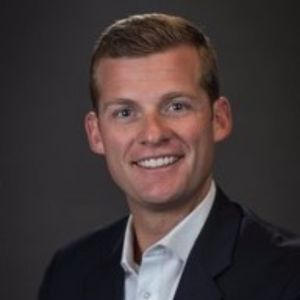Facing the Liability Insurance Nightmare
| By Douglas j. Edwards |
| Imagine receiving your car in- surance bill only to discover that your rate is 600 to 700% higher than the last time your premium was renewed. Is this a bad dream? you might ask yourself. For nursing home operators in Ohio and other states with high resident populations, the nightmare is all too real. "Some of our smaller operators that have never been sued at all were facing 600% rate increases and pinching pennies," says Robert Baker, executive director of the Ohio Academy of Nursing Homes, which represents independently owned and operated facilities. Baker says lawyers' aggressive solicitation for new cases is behind the massive rate increases: "[I]f a personal injury attorney is able to keep his/her case intact in front of a jury, the average award against a nursing home in the state of Ohio is approximately $275,000." Ohio ranks third (California and Texas are first and second, respectively) among states in terms of its nursing facility beds per 1,000 elderly, according to the 1999 American Health Care Association Facts and Trends: The Nursing Facility Sourcebook. Baker also believes that personal injury attorneys energized by battles with the tobacco industry are now targeting the long-term care field. This is resulting in a landslide of suits against homes and their insurance companies in states with high nursing home populations, particularly in Florida, where Tampa-based plaintiffs' attorney James Wilkes has filed hundreds of such suits. Says Baker, "If you go down to Florida and you sit in a hotel room, you can't watch television for more than 30 minutes without seeing a personal injury attorney saying, 'If your Aunt Abby has fallen down or if you think that your family member has been wronged, give us a call and we'll fight for you.'" Similar commercials are now airing in Ohio. As a result of this litigious climate, an Ohio facility with no previous losses (e.g., no wrongful death suits) and no major state regulation violations that paid about $50 to $100 per bed for general and professional liability insurance a year ago can now expect to pay $260 to $350 per bed, according to Peter Bern, an insurance agent with Cleveland-based G.F. Hoch, Co., which focuses on the long-term care field. The rates are even higher for facilities that have been sued or have performed poorly in state surveys; these facilities are now facing premiums of $1,000 to $2,500 per bed. "This liability crisis is perhaps the straw that could break many of our independent operators' backs," explains Baker. "The rate increases can eradicate |
all the profit involved in the operation of a nursing facility." 'the facility's state survey results Only Academy members can apply for the program. Although Baker insists that the Academy's members provide better care than their national-chain peers, some of its homes do not qualify for the program. "We had to be selective," says Baker, explaining the program's standards. "And that was probably the toughest obstacle from our perspective as a trade association." Yet intense interest in the program has fueled the Academy's recent expansion; Baker says that as a result of the barely year-old program, the number of beds the Academy represents has nearly tripled from 8,000 to 20,000, and virtually all of the approximately 215 members of the Academy are now in the program. While The Alliance Program and Neace Luken's relationship with AOPHA provide relief for some nursing homes, rates will continue to be a serious problem for many. "Insurance rates are increasing and changing every month. At one point I'm sure rates will flatten out, but over the next 6 to 12 months I still think you will see increases," says Bern, who believes that the trend will continue to spread across the country. His advice for nursing home operators is simple: "Be aware and be prepared." He recommends that six months before a home's premium is scheduled to renew, the facility should evaluate its options: "Scour the market looking for the right deal and get the right product, because a lot of these companies that might be offering a solid premium, or at least a competitive premium, have contracts that aren't as strong." Douglas J. Edwards is an assistant editor with Nursing Homes/Long Term Care Management. |
I Advance Senior Care is the industry-leading source for practical, in-depth, business-building, and resident care information for owners, executives, administrators, and directors of nursing at assisted living communities, skilled nursing facilities, post-acute facilities, and continuing care retirement communities. The I Advance Senior Care editorial team and industry experts provide market analysis, strategic direction, policy commentary, clinical best-practices, business management, and technology breakthroughs.
I Advance Senior Care is part of the Institute for the Advancement of Senior Care and published by Plain-English Health Care.
Related Articles
Topics: Articles , Finance












